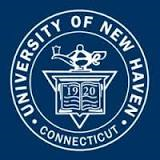What do they do?
Control and extinguish fires or respond to emergency situations where life, property, or the environment is at risk. Duties may include fire prevention, emergency medical service, hazardous material response, search and rescue, and disaster assistance.
Also known as:
Fire Apparatus Engineer, Fire Engineer, Fire Equipment Operator, Fire Fighter, Fire Management Specialist, Fire Medic, Fire Technician (Fire Tech), Firefighter, Fireman, Forest Fire Suppression Specialist, Forestry Fire Technician (Forestry Fire Tech), Hot Shot, Volunteer Firefighter, Wildland Firefighter
-
4.6%
Change
Ranks #41 in job growth rate1,400Job Openings
Ranks #6 in net job growth
-
Anna Maria College
Paxton, MA
-
University of Florida-Online
Gainesville, FL
-
Unity College
New Gloucester, ME
-
Utah Valley University
Orem, UT
-
University of New Haven
West Haven, CT
Looking for colleges that offer a specific major? Use the College Match Tool to find your best-matched schools and discover your estimated Net Price!
- Doctorate or Professional Degree (1%)
- Master's degree (3%)
- Bachelor's degree (22%)
- Associate's degree (23%)
- Some college, no degree (37%)
- High school diploma equivalent (14%)
- Less than high school diploma (1%)
Most Popular Majors that prepare Firefighters
-
#1
-
Degrees Granted
259
-
Female Students
39
-
Male Students
220
-
Median Starting Salary
$41,340
-
-
#2
-
Degrees Granted
44
-
Female Students
5
-
Male Students
39
-
Median Starting Salary
$41,340
-
-
#3
-
Degrees Granted
35
-
Female Students
5
-
Male Students
30
-
Median Starting Salary
$41,340
-
People in this career often have these skills:
- Critical Thinking - Using logic and reasoning to identify the strengths and weaknesses of alternative solutions, conclusions, or approaches to problems.
- Coordination - Adjusting actions in relation to others' actions.
- Service Orientation - Actively looking for ways to help people.
- Judgment and Decision Making - Considering the relative costs and benefits of potential actions to choose the most appropriate one.
- Active Listening - Giving full attention to what other people are saying, taking time to understand the points being made, asking questions as appropriate, and not interrupting at inappropriate times.
- Speaking - Talking to others to convey information effectively.
- Active Learning - Understanding the implications of new information for both current and future problem-solving and decision-making.
- Monitoring - Monitoring/Assessing performance of yourself, other individuals, or organizations to make improvements or take corrective action.
- Social Perceptiveness - Being aware of others' reactions and understanding why they react as they do.
People in this career often know a lot about:
- Public Safety and Security - Knowledge of relevant equipment, policies, procedures, and strategies to promote effective local, state, or national security operations for the protection of people, data, property, and institutions.
- Customer and Personal Service - Knowledge of principles and processes for providing customer and personal services. This includes customer needs assessment, meeting quality standards for services, and evaluation of customer satisfaction.
- Education and Training - Knowledge of principles and methods for curriculum and training design, teaching and instruction for individuals and groups, and the measurement of training effects.
- Building and Construction - Knowledge of materials, methods, and the tools involved in the construction or repair of houses, buildings, or other structures such as highways and roads.
- English Language - Knowledge of the structure and content of the English language including the meaning and spelling of words, rules of composition, and grammar.
- Mechanical - Knowledge of machines and tools, including their designs, uses, repair, and maintenance.
- Medicine and Dentistry - Knowledge of the information and techniques needed to diagnose and treat human injuries, diseases, and deformities. This includes symptoms, treatment alternatives, drug properties and interactions, and preventive health-care measures.
- Telecommunications - Knowledge of transmission, broadcasting, switching, control, and operation of telecommunications systems.
- Administration and Management - Knowledge of business and management principles involved in strategic planning, resource allocation, human resources modeling, leadership technique, production methods, and coordination of people and resources.
- Transportation - Knowledge of principles and methods for moving people or goods by air, rail, sea, or road, including the relative costs and benefits.
- Law and Government - Knowledge of laws, legal codes, court procedures, precedents, government regulations, executive orders, agency rules, and the democratic political process.
- Chemistry - Knowledge of the chemical composition, structure, and properties of substances and of the chemical processes and transformations that they undergo. This includes uses of chemicals and their interactions, danger signs, production techniques, and disposal methods.
People in this career often have talent in:
- Problem Sensitivity - The ability to tell when something is wrong or is likely to go wrong. It does not involve solving the problem, only recognizing that there is a problem.
- Oral Comprehension - The ability to listen to and understand information and ideas presented through spoken words and sentences.
- Oral Expression - The ability to communicate information and ideas in speaking so others will understand.
- Deductive Reasoning - The ability to apply general rules to specific problems to produce answers that make sense.
- Arm-Hand Steadiness - The ability to keep your hand and arm steady while moving your arm or while holding your arm and hand in one position.
- Static Strength - The ability to exert maximum muscle force to lift, push, pull, or carry objects.
- Far Vision - The ability to see details at a distance.
- Inductive Reasoning - The ability to combine pieces of information to form general rules or conclusions (includes finding a relationship among seemingly unrelated events).
- Control Precision - The ability to quickly and repeatedly adjust the controls of a machine or a vehicle to exact positions.
- Multilimb Coordination - The ability to coordinate two or more limbs (for example, two arms, two legs, or one leg and one arm) while sitting, standing, or lying down. It does not involve performing the activities while the whole body is in motion.
- Stamina - The ability to exert yourself physically over long periods of time without getting winded or out of breath.
- Near Vision - The ability to see details at close range (within a few feet of the observer).
- Speech Clarity - The ability to speak clearly so others can understand you.
- Information Ordering - The ability to arrange things or actions in a certain order or pattern according to a specific rule or set of rules (e.g., patterns of numbers, letters, words, pictures, mathematical operations).
- Flexibility of Closure - The ability to identify or detect a known pattern (a figure, object, word, or sound) that is hidden in other distracting material.
- Manual Dexterity - The ability to quickly move your hand, your hand together with your arm, or your two hands to grasp, manipulate, or assemble objects.
- Reaction Time - The ability to quickly respond (with the hand, finger, or foot) to a signal (sound, light, picture) when it appears.
- Dynamic Strength - The ability to exert muscle force repeatedly or continuously over time. This involves muscular endurance and resistance to muscle fatigue.
- Trunk Strength - The ability to use your abdominal and lower back muscles to support part of the body repeatedly or continuously over time without "giving out" or fatiguing.
- Speech Recognition - The ability to identify and understand the speech of another person.
- Written Comprehension - The ability to read and understand information and ideas presented in writing.
- Perceptual Speed - The ability to quickly and accurately compare similarities and differences among sets of letters, numbers, objects, pictures, or patterns. The things to be compared may be presented at the same time or one after the other. This ability also includes comparing a presented object with a remembered object.
- Extent Flexibility - The ability to bend, stretch, twist, or reach with your body, arms, and/or legs.
- Auditory Attention - The ability to focus on a single source of sound in the presence of other distracting sounds.
People in this career often do these activities:
- Rescue people from hazardous situations.
- Select tools, equipment, or technologies for use in operations or projects.
- Assess characteristics of fires.
- Relay information about incidents or emergencies to personnel using phones or two-way radios.
- Locate fires or fire danger areas.
- Respond to emergencies to provide assistance.
- Operate firefighting equipment.
- Examine debris to obtain information about causes of fires.
- Prepare hoses or water supplies to fight fires.
- Request emergency personnel.
- Communicate with other workers to coordinate activities.
- Patrol natural areas to ensure safety or enforce regulations.
- Collaborate with law enforcement or security agencies to respond to incidents.
- Demonstrate activity techniques or equipment use.
- Prepare investigation or incident reports.
- Attend training to learn new skills or update knowledge.
- Maintain professional knowledge or certifications.
- Participate in physical training to maintain fitness.
- Protect property from fire or water damage.
- Educate the public about fire safety or prevention.
- Maintain fire fighting tools or equipment.
- Inspect facilities to ensure compliance with fire regulations.
- Inspect equipment to ensure safety or proper functioning.
This page includes data from:

 Occupation statistics: USDOL U.S. Bureau of Labor Statistics Occupational Employment Statistics
Occupation statistics: USDOL U.S. Bureau of Labor Statistics Occupational Employment Statistics









